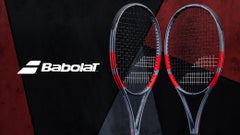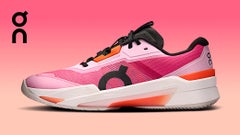Knit versus woven. Do you know the difference?
Do you ever find yourself asking questions like, "What's the difference between salted and unsalted butter?" or "Isn't the 'Blue Green' crayon the same as the 'Green Blue' one? So really, the 24 box of crayons should be changed to 23 crayons?" We know these things are different, but sometimes have a hard time distinguishing those main differences. Tomato, Tomahto.
A frequently asked question in the world of tennis apparel is, "What's the difference between knit and woven?" Which can be pretty important to know when browsing through all the different shorts, skirts, and jackets labeled as either "knit" or "woven."
Today we're passing that knowledge off to you! Like the name, knit apparel is formed by (whaddaya know) knitting -- in other terms, interlocking loops of fabric together. This technique allows the finished product to be stretchier because of the loops. If you were to pull the fabric in different directions, the cloth will stretch to your movement. In its basic form, woven apparel on the other hand is interlaced tightly together by threads passing in one direction, making them not as stretchy. (There are more technical woven fabrics designed with two-way stretch or four-way stretch.) We wish we could describe the difference in one word for simplicity, but unfortunately it probably wouldn't make any sense. So we'll also lay out the differences in a list to keep the explanation simple.
All in all, knit is generally designed for comfort and woven is more of a performance based fabric to wick away moisture better. You also might be surprised when we say we weren't kidding about telling the difference between the two fabrics blindfolded. It's true, we can do it. We'll let you in on my little secret: Woven is usually noisier if you rub the fabric together. Since knit is softer and more elastic it doesn't make as much sound as woven fabrics.

Today we're passing that knowledge off to you! Like the name, knit apparel is formed by (whaddaya know) knitting -- in other terms, interlocking loops of fabric together. This technique allows the finished product to be stretchier because of the loops. If you were to pull the fabric in different directions, the cloth will stretch to your movement. In its basic form, woven apparel on the other hand is interlaced tightly together by threads passing in one direction, making them not as stretchy. (There are more technical woven fabrics designed with two-way stretch or four-way stretch.) We wish we could describe the difference in one word for simplicity, but unfortunately it probably wouldn't make any sense. So we'll also lay out the differences in a list to keep the explanation simple.

All in all, knit is generally designed for comfort and woven is more of a performance based fabric to wick away moisture better. You also might be surprised when we say we weren't kidding about telling the difference between the two fabrics blindfolded. It's true, we can do it. We'll let you in on my little secret: Woven is usually noisier if you rub the fabric together. Since knit is softer and more elastic it doesn't make as much sound as woven fabrics.













